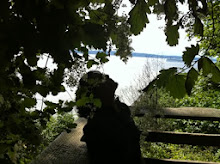“The self … is not an
organic thing that has a specific location, whose fundamental fate is to be
born, to mature, to die; it is a dramatic effect arising diffusely from a scene
that is presented.”
–Erving Goffman, “The
Presentation of Self in Everyday Life”
(How I love this book,
let me count the ways…)
Favourite food: Bitter
gourd (called karela in Hindi).
On moving from one class
to the next, often classmates would ask you to fill a diary, especially in
Convent schools in India, and answer generic questions regarding favourite
things like book, food, movie, song before coming to the main point, ‘what do you
think about me?’ Whereby a person duly wrote some pithy falsehood without a
twinge on the conscience (despite all the teachings of the good nuns in the
moral science classes). How to co-exist with other people is an early learning in India, given that we grow up with over a billion of them. Whether we learn our
lessons well is another question altogether.
Needless to say, what I
thought were honest answers weren’t always appreciated. Consider the answer
above. My responses were seen as flippant, sometimes outright lies. But bitter
gourd has been (and continues to be) my favourite food ever since I could tell
apart taste. However, putting down chocolate would have made everyone
comfortable and kept up appearances, I know.
“If we see perception as a form of contact
and communion, then control over what is perceived is control over contact that
is made, and the limitation and regulation of what is shown is a limitation and
regulation of contact.”
For me it was an early
learning: in any given situation what do you do? Maintain popular perception,
or break the contract by acting out a whim and thereby altering other people’s
perception regarding you, as well as, the situation being played out? (And not
necessarily in your favour.)
Yes, it is as
complicated as it reads, but in human interactions it plays out casually in the
blink of an eye. For much of my growing years I was troubled by understanding
the limits and regulations of contact, and communion. More so given the fact
that my teen years for the most part “played out” literally in the public eye.
After all, success in life depends on “reading” the situation and “acting
accordingly”. (Case in point: Donald Trumps pitch perfect role in the US
Presidential nomination race.)
Then I came upon Erving
Goffman’s seminal book on social interaction, The Presentation of Self
in Everyday Life (1959)– needs a revisit/update in this age of thinly sliced identity politics
and carefully curated social media profiles. And soon after that followed
Ingmar Bergman’s seminal film Persona. Both enriched and continue to enhance my
understanding of the self (as one perceives it) and the socially interacting
self (as one plays/the society perceives it).
Above all, since then
I’ve found my place (and a comfortable one) in the social scene.









































